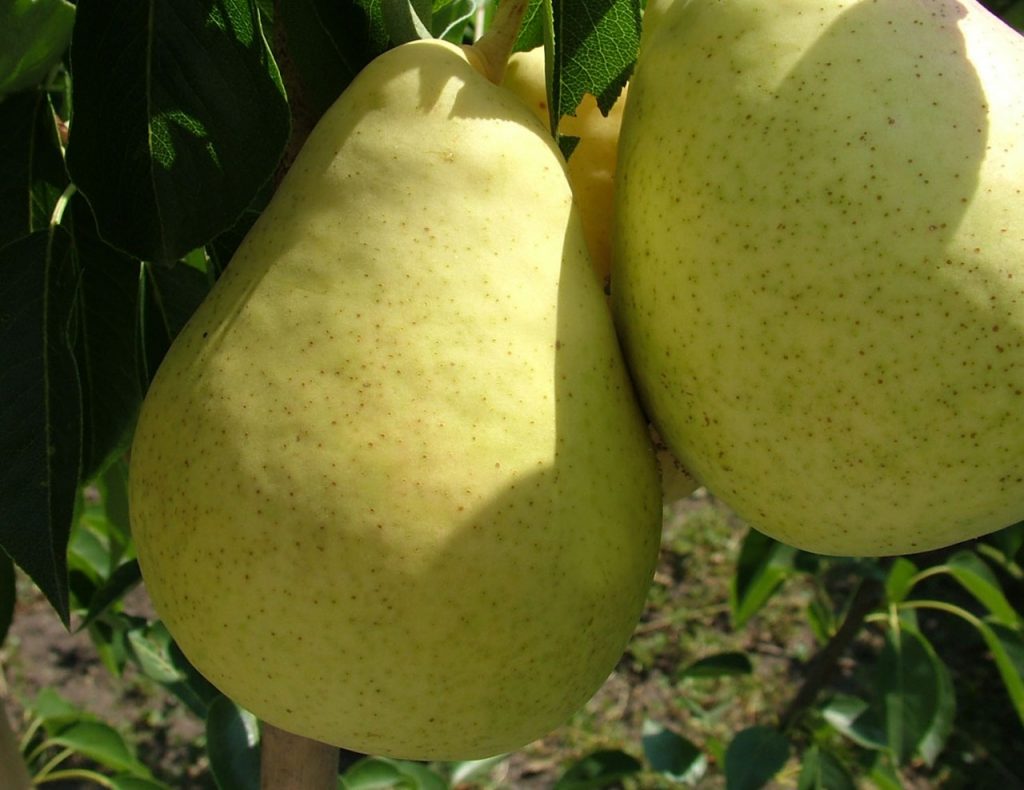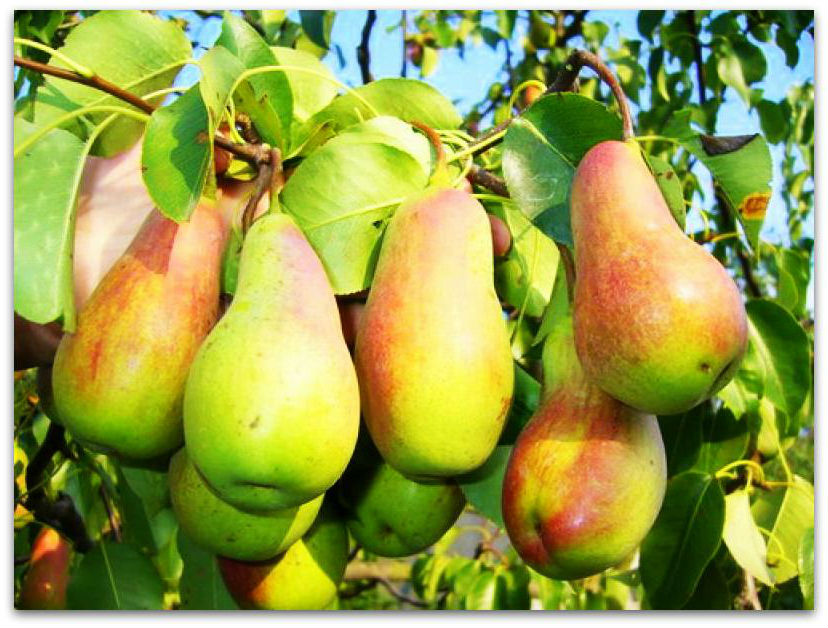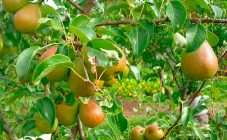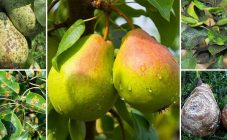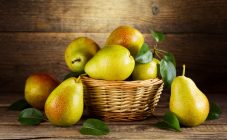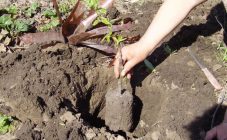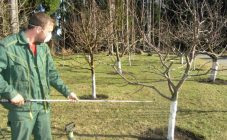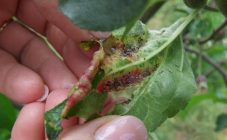Content:
Today we can say that there are several thousand varieties of pears. It is very difficult to accurately calculate the number, because her images were captured by ancient Greek painters a thousand years before our era. In the Middle Ages, all over the planet, there is an explosion of activity of breeders precisely in the development of new varieties of this culture. Especially in countries with warm climates. In France alone, at the beginning of the 17th century, there were more than 250. At the beginning of the 19th century, the famous domestic breeder LP Simirenko, in his personal nursery, raised and described 1123 varieties of pears.
Common varieties of culture
Pear is a fruit tree of the Pink family. In nature, it grows in areas up to 60 degrees north latitude. Although the culture prefers a sunny mild climate, frost-resistant species have been bred in the process of perennial selection, and now the pear grows everywhere, except for permafrost.
All types of crops are subdivided into summer, autumn and winter varieties, depending on the ripening period.
The most popular summer varieties
Summer varieties begin bearing fruit in July. The main thing is not to miss the massive ripening of the fruits, since they become unsuitable for consumption a maximum of a week after readiness - they become too soft and rot.
- Lemon. The tree is unpretentious, with a long fruiting period. The first pears appear in the seventh season after planting. High-yielding variety, but excessively watery fruit pulp. Small yellow pears are harvested from July to August. The variety is susceptible to scab infestation. Crop care consists of watering, loosening and pruning.
- Lada. Cold resistant, high yielding. Begins fruiting in the third year. The fruits are quite large (150 g), juicy, sweet, with a slight sourness. Ripen by the end of July and until the first half of August.
- Whiteleaf. Differs in stable fruiting. Trees are frost-hardy, unpretentious to keeping conditions and little susceptible to fungal infections. Small (up to 50 g) fruits are stored for no more than two weeks.
- Early ripening. The variety with enviable consistency gives a rich harvest in early July. The fruits are large (150 g), taste with sourness, green pears with pink sides. The first fruits appear in the sixth year of cultivation. It tolerates drought and prolonged cold snaps well, but poorly resists scab.
- Rogneda. A very interesting variety. The keeping quality of medium-sized (120 g) fruits is almost three months. Only store in a cool place. The taste of yellow and red fruits is unusual, with a nutmeg aftertaste. The species is resistant to the invasion of pests and is not afraid of frost. The disadvantage is the unpredictability of fruiting.
- Bere Giffard. Quite a capricious variety. Does not tolerate cold weather and is picky about the composition of the soil. In addition, the yield and keeping quality (3-4 days) are low. But there are also advantages. It is a melting structure of delicious fruit, disease resistance. Harvesting takes place at the end of July.
Autumn pear varieties
As the name suggests, the fruits are harvested during the autumn months - September-November. These varieties are stored longer - a month and a half. After ripening, it is recommended to harvest the crop no later than a week. Autumn fruits are good for conservation.
Popular autumn varieties:
- Otradnenskaya. It begins to bear fruit in the fifth year. Stably productive, frost-hardy. Fruits are medium in size (130 g), odorless and pronounced taste. They tolerate transportation well.The species is partially self-fertile, therefore, in order to increase the yield, it is recommended to plant varieties of the type nearby: Memory Zhegalov; Marble; Muscovite.
- Cheremshina. Pyramidal pear. Fruits are removed until November. Yielding, with large (up to 250 g) yellow and orange fruits. Long shelf life of the crop (up to 5 months). It is resistant to cold and disease.
- Admiral Gervais. High-yielding variety. Fruits are large (250 g and more), very fragrant and tasty, perfectly transported, ripen in October. Among the disadvantages, one can note the instability to bacterial damage and the exactingness of the soil.
- Memory of Zhegalov. A variety bred in Russia. It does not have a rich yield. Sweet and sour fruits are medium-sized (150 g), juicy and fragrant. The variety needs pollinators. The Otradnenskaya variety is well suited for this. Resistant to disease and cold. The fruits ripen by the end of October.
- Duchess. The variety is not resistant to frost, picky about the composition of the soil. The advantages include: fruit size - up to 600 grams; aroma; amazing taste.
Winter varieties of pears
Fruits of winter varieties are distinguished by excellent keeping quality. Can be safely stored until spring. Fruit ripeness occurs in the second half of October.
The most famous winter types:
- Curé. The variety is in demand. The trees grow tall and lush. The tree begins to bear fruit in the sixth season. Fruits are medium in size, medium in flavor and moderately aromatic. They ripen by the end of November and are stored throughout the winter.
- Etude Kiev. Compact, high-yielding, cold-resistant tree. Begins fruiting in the fourth year. Fruits weighing about 250 g, juicy, with notes of rose in taste. The pear is not susceptible to disease.
- Bere Ardanpon. The birthplace of pears Belgium. The first harvest from a tall tree is taken in the fourth season. A small number of fruits are ready for harvest in the first decade of October. Large pears - up to half a kilogram, sweet, slightly tart, sweet. Poorly tolerates cold and lack of fertilizers.
- Kyrgyz winter. Small trees are prone to strong branching. Fruits are medium-sized (up to 250 g), tart. Good transportability and keeping quality. The species is frost-resistant and is not afraid of disease.
- November. The most favorite pear, especially in European countries. Large (up to 700 g), juicy and aromatic fruits ripen in early October. High-yielding, unpretentious variety, tolerates cold well and is resistant to scab.
Pear pests, signs of their appearance, methods of control and prevention
Every gardener dreams of healthy and productive fruit trees. Meanwhile, danger lurks at every step of the cultivation of the garden. You need to be very attentive to the slightest changes in the appearance of trees. Pest attacks are easier to prevent than overcome.
Pear, like no other crop, is susceptible to damage from pests. Here are some of them:
| Npp | Pest | Description of the pest | Control methods |
|---|---|---|---|
| 1 | Hawthorn | The hawthorn caterpillar eats all the soft parts of the plant. It hibernates in twisted leaves, having previously glued the cracks with cobwebs. | It is recommended to collect all suspicious leaves by hand and burn them. Also check for spider nests on nearby plants. For prevention, trees should be treated with insecticides (Decis, Nitrafen). |
| 2 | Comma-shaped shield | It looks like a brown inverted comma. The larvae cause harm. | Before the buds hatch (April - May), trees are sprayed with DNOC solution to destroy the eggs of the pest. Insecticides Decis and Kinmik will tell you how you can fight the scabbard on the pear after the larvae hatch. |
| 3 | Coconut | A large furry butterfly. Does not live long. The larvae cause harm. | Manual egg-laying. For extensive sowing, the use of insecticides, such as Nitrafen. The use of special adhesive strips is possible. Whitewashing the tree with lime gives good protection. |
| 4 | Unpaired silkworm | A large brown butterfly with whitish wings, on which black irregular stripes are noticeable. These pear pests settle on the leaves and eat them.They are almost 1 cm long, covered with brown hairs. | Manual egg-laying. For extensive sowing, the use of insecticides, such as Nitrafen. The use of special adhesive strips is possible. Whitewashing the tree with lime gives good protection. |
| 5 | Ringed silkworm | A brick-burgundy butterfly, with a dense fluffy cover of yellow. Pests are blue-gray hairy larvae. | Manual egg-laying. For extensive sowing, the use of insecticides, such as Nitrafen. The use of special adhesive strips is possible. Whitewashing the tree with lime gives good protection. |
| 6 | Silkworm | A very large moth, with a wingspan of 8 cm. Gray or burgundy caterpillars are pests, also large - up to 8 cm in length. | Manual egg-laying. For extensive sowing, the use of insecticides, such as Nitrafen. The use of special adhesive strips is possible. Whitewashing the tree with lime gives good protection. |
| 7 | Flower beetles: Apple Pear | These are ash-brown, green or black beetles on a pear with a long trunk. They eat buds and leaves, and their larvae eat only flower buds. | Weevil on a pear, how to deal with it must be decided before summer. You need to start with the spring cleaning and liming of the tree, the use of trapping belts, the mechanical collection of pests, the use of Decis, Kinmik preparations. |
| 8 | Aphid: Green Blood | Small insects - pests of pears on leaves, feeding on juices of young shoots and leaves. | Small quantities are destroyed by hand, but abundant lesions can only be eliminated with insecticides (Zolon, Metathion). As a preventive measure, it is recommended to spring the garden with 25% hexachlorane powder or dust. Alternative methods can also be applied. For example, a soap-ash solution (150 g of grated soap, 0.5 kg of ash per bucket of water. Insist for a day, strain and spray). |
| 9 | Mole: Fruit Mining | The moth itself looks like a very fragile moth and does not harm the pear. The fruits are spoiled by gluttonous caterpillars. Very small green larvae do not suck out the juice, but directly eat the flesh of the fruit. It turns out a nibbled pear. | Early-spring cleaning of last year's foliage and treatment of plantings with Zolon, Metathion, Nexion, Phosphamide help well. You can try to use an infusion of hot pepper and laundry soap for this purpose. |
| 10 | Subcrustal leaf roll | It affects almost all fruit crops. These pests can harm all parts of the tree. | Mechanical cleaning and whitewashing of the trunk will help. Various traps can be used and sprayed with organophosphates. |
| 11 | Fruit moth: Eastern Pear Yablonnaya | The butterfly lays eggs inside the flower and the hatched larvae make their way into the fruit and eat the seed box. | Mechanical methods of preventing proliferation work well. This is the timely removal and destruction of volunteers, digging of the near-stem zone, installation of sticky strips. With the dominance of the pest, you will have to apply insecticides (Iskra, Karbofos, Fufanon). |
| 12 | Ticks: Gallic Red apple | Ticks are arachnid arthropod insects. Very prolific. Black bugs on the pear suck the sap from the leaves of the tree, disrupting the process of photosynthesis. They hide from the sun in the middle and lower parts of the plant. | The fight is carried out by mechanical cleaning of the bark of the trunk and whitewashing. In case of severe infection, insecticides such as Karbofos, Trichlormetaphos will help. |
| 13 | Common honeydew | These are flying insects with transparent wings. A pest is a larva that feeds on the juice of pear leaves, which slows down the growth and development of the culture. Accumulations of copperhead are manifested by swelling of honeydew, on which sooty fungi develop. | If a copperhead appears on a pear, the control measures may be different. In case of minor damage, mechanical cleaning of the bark of the trunk from moss and lichen will help. To prevent damage, it is advised to spray the garden with Karbofos, Agrovertin or Decis.What else can be used to process the honeydew on the pear? Folk councils suggest that a tree can be fumigated with tobacco smoke. |
| 14 | Pear sawfly | The insect is 5-6 mm long, lays one egg in unopened buds. The hatched larvae eat away the core of the ovary and transfer to other fruits. | It is recommended to spray the tree with insecticides (Karbofos, Agrovertin) at the beginning of flowering. |
| 15 | Pear gall midge Pear fruit gall midge | Pear fruit gall midge is a brown insect similar to a gnat. The larvae cause harm. The insect infects the fruit ovary and feeds on its pulp. | To get rid of the pest, the pear is treated during the mass laying of eggs with Chlorophos, Phosphamide, Metaphos. |
| 16 | Winter moth | Gray-brown flightless females do no harm to the pear. Caterpillars eat buds, leaves and flowers of their light green color. | To combat the winter moth, insecticides Zolon, Metathion, Nexin, Chlorophos, Oleocobrite are used. |
It is not easy for a gardener to choose a pear tree for himself from such an abundance of proposals, because each variety is bred for a specific purpose. A guide in the choice can be the conditions of the area of residence, the goals in using the crop and the availability of sufficient free time to care for the plantings. Pear trees have a lot of pests, but experienced gardeners have learned how to cope with any insects, butterflies and caterpillars.
